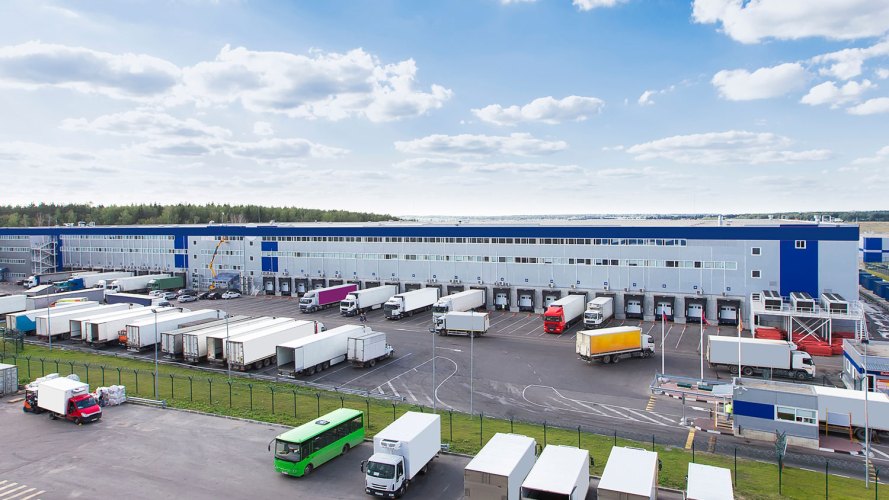What Is Supply Chain Sustainability — And Why Do Businesses Need It Now?



A company’s ESG performance is now inseparable from its supply chain. Here's why your business needs supply chain sustainability now.
As companies race to ensure compliance with growing environmental, social, and governance (ESG) regulations, many are facing the challenge of reporting on the supply chain. Emissions from the supply chain play a large part in a company’s scope 3, or indirect, emissions, which is generally the largest and most complex emissions category. At Salesforce, scope 3 emissions make up 80% of our total emissions, with suppliers accounting for 74% of that.
It’s estimated that 80% to 90% of environmental and social footprint lies in the supply chain in most industries. Without the right tools, tracking supply chain emissions data is particularly difficult. As a result, it’s become increasingly clear that supply chain professionals play a major role in driving the strategy and execution of sustainability and ESG initiatives.
Here’s what we’ll cover:
- What is supply chain sustainability?
- Why do businesses need supply chain sustainability now?
- Three steps to improve supply chain sustainability
- It’s time for supply chain sustainability
What is supply chain sustainability?
Supply chain sustainability refers to the integration of environmental and social initiatives into a company’s supply chain to keep both people and the planet at the forefront.
A company’s ESG performance is now inseparable from its supply chain. Companies must work together with their suppliers and customers to integrate sustainability into all aspects of the value chain. This will bring the next wave of decarbonization and progress toward net zero emissions.
Why do businesses need supply chain sustainability now?
Stakeholders now expect companies to provide transparency in their reporting and actively engage in values-driven work. According to a 2023 report by the MIT Center for Transportation & Logistics, commercial interests, from sustainability-driven investors to sales opportunities, have represented the fastest growing pressure to boost supply chain sustainability.
Businesses also need to comply with growing ESG regulations worldwide, from the EU’s Corporate Sustainability Reporting Directive (CSRD) to U.S.-based laws such as California’s climate disclosure rules. Both of these regulations require scope 3 reporting and are expected to impact approximately 50,000 and 5,000 companies, respectively.
Accurately measuring, monitoring, and reporting on carbon emissions remains a challenge. Companies want solutions that bring together carbon emissions data from energy usage, company travel, purchased goods, and more in a single platform. This can inform both reporting and strategic decision-making when building sustainable supplier relationships.
Three steps to improve supply chain sustainability
These steps can help you drive sustainability in the supply chain and reduce scope 3 emissions.
1. Make sustainability part of the supplier relationship from day one
Companies should integrate a personalized supply chain strategy into their sustainability strategy. The best way to do that is to ask yourself: Does my supplier know that climate action is important to my company? When developing supplier relationships, sustainability needs to be embedded as a priority within every step of the procurement process.
“We can’t just count spend; we have to truly count impact,” said Jennifer Browne, SVP, Chief Procurement Officer at Salesforce. “It’s a business imperative to integrate sustainability into our decision-making, and it’s a risk to companies who don’t protect their businesses against future shocks coming from climate change.”
Begin with a request for proposal, making sure to incorporate standard sustainability questions into it. These questions are up to you, but generally should center around sustainability initiatives and commitments, climate targets, and sustainability performance monitoring.
You should also include industry-specific questions when relevant, such as LEED questions for a general contractor or average fleet miles per gallon for a ground transportation company. This information will help you understand where a supplier is in their sustainability journey, how to work with them, and when to choose one supplier over another. Once you understand where the supplier is starting, you can also ask them to commit to climate targets. At Salesforce, we aim to serve as an example for our suppliers when it comes to bold climate action.
Take, for example, Salesforce’s Sustainability Exhibit, where we’ve made climate action contractual. We ask suppliers to set science-based targets for reducing carbon emissions in alignment with the 1.5-degrees target (just as we have done at Salesforce), mandate emissions reporting, and deliver their products on a carbon-neutral basis. It’s all about working with suppliers and finding the right sustainable path forward together, prioritizing data-driven climate action. Collaboration at scale is critical to keep global temperatures below 1.5 degrees Celsius compared to pre-industrial levels to avoid increased catastrophic natural disasters.
Enabling suppliers and meeting them on their journey is critical to the success of the Exhibit and overall decarbonization progress. This is why we also released the Supplier Net Zero Toolkit, a hub for suppliers looking to advance their own decarbonization journeys.
Meaningful supplier partnerships are what drive greater impact in your supply chain sustainability strategy. This is how Net Zero Cloud customer Breitling also thinks about their approach.
“A partnership mindset is essential to drive meaningful action across the supply chain,” said Aurelia Figueroa, Global Director of Sustainability at Breitling. “This has been a key aspect in industry-leading supply chain transformations that are underway at Breitling, from the sourcing of artisanal and small-scale gold and lab-grown diamonds to dedicated supplier support along the way, including financial support from our Carbon Fund.”
2. Consider alliances and the entire supply chain
It’s also important to consider developing new alliances and analyzing your business’s impact in the supply chain, all the way down from suppliers to sold products.
At Salesforce, we focus on a mutual interest in doing good and alignment with our goals for both Salesforce and the planet. Sustainability is a journey that will look different for every company, and our suppliers know their businesses best. The Sustainability Exhibit is designed to be adaptable to a supplier’s unique situation (industry, size, geography, etc.) while maintaining its integrity and ambition. We put significant consideration into the intent behind each provision, and we’ve aligned the consequences of non-compliance with our objective of ensuring a more sustainable future than business as usual.
Sustainability is and always has been built into the very fabric of MillerKnoll. From the initial philosophies of Herman Miller’s founder on environmental stewardship to the development of innovative materials, designs, and efficiencies available today, the MillerKnoll collective of brands share the vision of a more sustainable future without compromising quality.
Recognizing that this is a shared effort, MillerKnoll partners with members of their supply chain to develop sustainable solutions to improve and mitigate environmental impacts in ways that provide value to global stakeholders. After being invited by its customer Dell, MillerKnoll became a founding member of NextWave Plastics, an organization of multinational companies developing the first global network of ocean-bound plastics supply chains.
NextWave Plastics is building an entire economy around decreasing plastic litter in the ocean through strategic alliances and collaboration across industries. We urge you to look at ways to do the same.
3. Drive clarity and transparency with high-quality, supplier-provided data
Getting accurate and actionable data on scope 3 emissions can be a major roadblock to achieving and accurately recognizing emissions reductions.
At Salesforce, we published five key steps for integrating our supplier data into a scope 3 inventory:
Step 1 – Collect data
We request supplier-specific emissions data through CDP Supply Chain.
Step 2 – Allocate emissions
Our allocated emissions may be provided by the supplier or calculated by Salesforce using the revenue intensity values collected using CDP Supply Chain.
Step 3 – Review data quality
We review the data to ensure it is of sufficient quality to use in place of existing methods, which includes quality tests, scores, and gates.
Step 4 – Incorporate supplier-specific emissions
We substitute spend-based data with hybrid method data if hybrid method quality score supersedes spend-based quality score.
Step 5 – Adjust prior years
We update base-year emissions using percent difference to spend-based method.
We recognize that while we have seen some early success with this methodology, its implementation is a journey requiring additional refinement and data availability from a wide array of suppliers and partners.
Using an ESG management platform like Net Zero Cloud to help track your supply chain emissions data can provide clarity on what changes need to be made to achieve carbon neutrality. You can also use your ESG management platform to increase transparency for key stakeholders. For every goal post you set, determine your metrics and measure that success. Showing progress will be a great way to keep the momentum and change going.
ESG readiness starts here
Built on the #1 AI CRM, Net Zero Cloud connects environmental, social, and governance data with every corner of your business — including your suppliers, partners, and value chain — and automates reporting with Einstein.



It’s time for supply chain sustainability
Building sustainability into the supply chain and customer relationships is one of the most effective ways to reduce carbon emissions and meet aggressive carbon reduction targets, but you can’t do it alone. It requires building trust and reputation with your suppliers, making it clear that sustainability is a top priority, and holding your company and your suppliers accountable.
Get started by having a conversation with suppliers on how to commit to sustainable business practices. Form essential partnerships in your supply chain and with other companies who are aligned with your mission. Integrate supplier data to measure the impact together. This way, we can all create a sustainable supply chain that will have positive environmental and social returns.





























